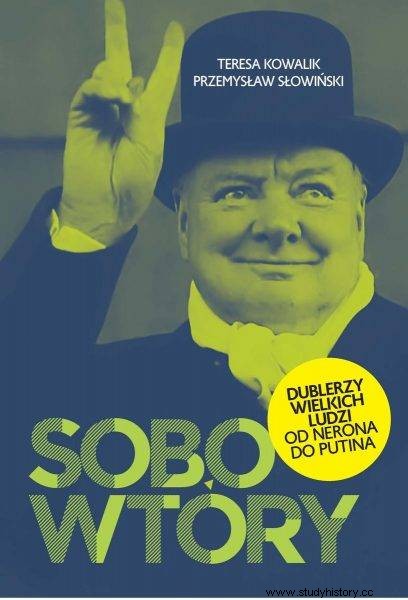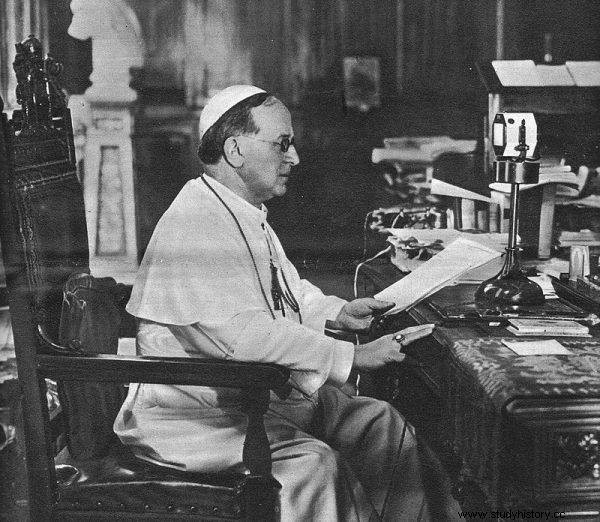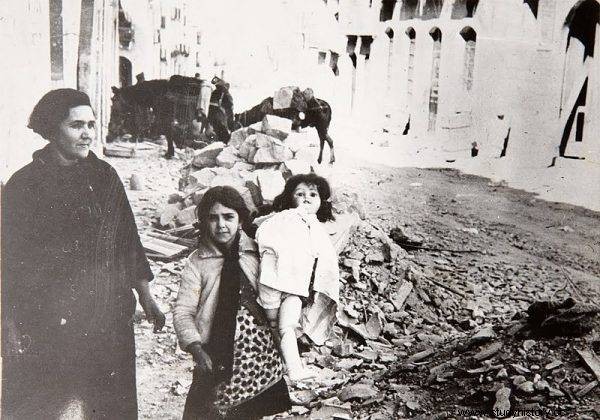Bishop Fidel García Martínez was to be discredited for denouncing fascism. Rumor has spread throughout Spain that the priest is a regular guest of brothels.
The attack on the clergyman left no doubt - the abuser in the cassock was enjoying bodily pleasures in the arms of prostitutes. It was not until several decades later, in 2008, that a grim truth came to light. The clergyman fell victim to the intrigue of General Franco's people.
Socialist Republic of Spain
Fidel García Martínez was a priest in the Spanish province of Asturias at a time when the Spanish state was at one of the sharpest turns in its history. This is where the European totalitarian powers - the communist Soviet Union and Nazi Germany - set up a training ground or, if you prefer, a correspondence war in which over 300,000 people lost their lives.
In the 1930s, along with the growth of the working class in Spain, the communist ideology resonated more and more (not without the participation of Soviet agents). The Spanish Socialist Workers' Party sensed an opportunity to overthrow the system and bring communism along the lines of the USSR. It sounds absurd from the Polish perspective, but it was the intentions of the Spanish communists. Without blinking an eye, they swallowed the Soviet propaganda in which the Soviets were a state of milk and honey.

The revolt was pacified by the troops of General Francisco Franco, but it was only the beginning of hell
In 1934, workers' revolts broke out. The communists directed the blade of the revolution not only against the Church, as one of the symbols of the previous order, but also against religion itself. They wanted to wipe her off the Spanish soil by force. So they set about killing people who had not renounced their faith. Teresa Kowalik and Przemysław Słowiński, authors of the book "Sobowtóry - from Nero to Putin", write:
1.4 thousand people died, the revolt led to the destruction of 58 temples and the mass murder of the religious of the Congregation of the Passion of Jesus Christ of Turón . The day after the outbreak of the revolt, in the early morning of October 5, during the daily morning mass in the school chapel, the facility was attacked by the raging communist mob. The attackers were looking for weapons and although they did not find them, they imprisoned the priest and the seven monks who assisted him.
When everyone refused to join the revolution, they were shot four days later. Two firing squads were needed. After the second, the killers approached the friars and finished them off with pistol shots. Some were killed with rifle butt blows to the head. The bodies were robbed of their clothes.
A proving ground for great powers
The revolt was pacified by the troops of General Francisco Franco, but it was only the beginning of hell. Two years later, the communist People's Front coalition won the elections in Spain. The country was engulfed in a revolutionary wave of violence, the murders of political opponents began, churches were set on fire, attacks on the headquarters of the party and the right-wing press. There was a conspiracy in the army against the communists. The spark that ignited the fire of the civil war was the murder by members of the Republican Guard of one of the leaders of the right-wing parliamentary opposition, José Calvo Sotelo. For the next three years, Spain split into two camps.

The text was created, among others based on the book by Teresa Kowalik and Przemysław Słowiński "Sobowtóry", which has just been published by the Fronda publishing house.
At the same time, it became an international "training ground" for the impending world war. The state of Stalin was on the side of the republic. Weapons, equipment and "specialists" - saboteurs, special units, agents - went to Spain. The so-called International Brigades, i.e. armed units of volunteers (a total of 34,000 soldiers from 54 countries around the world, including the Polish International Brigade named after Jarosław Dąbrowski, commonly known as Dąbrowszczakami).
Franco was helped by fascist Italy and Nazi Germany (the Condor Legion was sent to fight).
For whom the bell rang?
Who was good and who was bad in this war? With whom was the truth and who was the lie? It is impossible to answer such a question. Dark totalitarian regimes stood on both sides. Both have committed war crimes, but perhaps because of Western intellectuals and artists who have been seduced by Marxism, is now often blamed on the "right" Republicans. The Spanish communists supported, among others French philosopher, Nobel laureate Jean Paul Sartre, as well as writers - George Orwell and Ernest Hemingway.

Anti-Catholic demonstrations in Madrid during the civil war
In the mass imagination, the Spanish Civil War has an "image" drawn by For Whom the Bell Tolls , Hemingway. The main character, American Robert Jordan, who fought on the side of the republic, was the embodiment of an idealistic attitude. The truth about the achievements of those who went to fight in the name of world peace, justice and equality, however, was much more cruel. The Republican Battle Trail was full of crimes against the civilian population, especially against Catholics . Those who did not publicly renounce Christ were killed and murdered with exceedingly cruelty. Teresa Kowalik and Przemysław Słowiński emphasize:
The number of martyrs for the faith is thus around 10,000. Not even Nero murdered so many in ancient Rome. There were unimaginable bestialities. People were burned alive, the Reds threw "fascists" into the enclosures of wild animals in Madrid and Barcelona zoos. They organized bullfights (cruel in themselves), in which they killed priests instead of bulls. Ancient priests were dragged along the street behind trams.
An old vicar was undressed, tortured, and had his limbs cut off by putting his genitals in his mouth. Another was shot a bit, targeting individual organs one by one so that he wouldn't die right away. Many were treated like bulls on the bullfight, and some had their eyes removed or castrated. British historian and writer Hugh Thomas commented on the massacres perpetrated by Republicans on Catholics:"Never in the history of Europe, and perhaps even the world, has hatred of religion and its followers so embodied".
Antifascist Bishop
The Spanish Catholic Church supported General Franco and the national forces, even though the nationalists showed little love for their neighbor. They had thousands of murdered and exiled from the country or put into concentration camps modeled on the German ones. It was also common practice to take children away from Republicans, falsify their data and place them in foster families.
After winning the civil war, General Franco took power in Spain for several dozen years. Although the nationalists (like the other side) committed mass crimes, some historians emphasize that their victory saved not only Spain but all Europe from the nightmare of communism . Franco's dictatorship lasted until his death in 1975. The general managed to restore unity to the society - at the cost of mass emigration of political opponents (several hundred thousand supporters of the republic left Spain). The general prevented the country from participating in the Second World War, as well as preventing the outbreak of another revolution, which the Marxists of the People's Front were striving for.

The Catholic Church, in the encyclical "With Burning Concern", published in 1937 by Pope Pius XI, officially condemned German Nazism and Hitler's policies.
Bishop Martínez, mentioned at the beginning, survived the civil war. Like the entire Spanish episcopate, he supported the Frankists. “Although he hesitated for a long time, his dilemmas were finally ended by Martínez's head, Archbishop of Barcelona, Manuel Irurita y Almándoz, who said:'Here you can only be for or against. This is what the entire episcopate decided. " After all, the Frankists did not rape nuns, cut the throats of priests, and did not play football with the skull of Bishop Astorga Joan Bautista Grau y Vallespinós ”- emphasize the authors of the book“ Sobowtóry - from Nero to Putin ”.
The clergyman, however, did not intend to live the Frankist regime and its allies indefinitely and without any conditions. As the specter of a bloody war looms over Europe, the Catholic Church, in the encyclical "With Burning Concern," published in 1937 by Pope Pius XI, officially condemned German Nazism and Hitler's policies. The document is considered to be the most famous anti-Nazi manifesto of the Catholic Church in the pre-war period. During the war, Pius XI's successor, Pius XII, did not have the courage to denounce Nazism and Nazi crimes against Jews.
Contrary to the prohibitions
Of course, the encyclical has also been read and commented on in other Catholic countries. It also found its way to Spain, which was preoccupied with civil war. General Franco, as an ally of Hitler, found himself in a difficult situation. He could not let the Pope's words resonate among the population and soldiers. Teresa Kowalik and Przemysław Słowiński write:
The day after the Pope announced the encyclical warning the world about the danger of the expansion of Nazism General Franco ordered it to be classified in all dioceses in the territories he had captured during the 10 months of civil war . His soldiers were mostly Catholic, and the caudillo was well aware of the damage that Pius XI's words could do to the morale of his troops. After all, he waged a war under the slogan of "defending Christianity against a godless republic."
Thus, from the pulpits in Spanish churches, the papal words were kept silent. This is what all the hierarchs did, except Bishop Martínez. At his command, Pius XI's encyclical was published in all the churches of his diocese and additionally printed in the diocesan bulletin. But it doesn't stop there - during the war, when the German bishops did not have the courage to express their opposition, Martinez published a pastoral letter entitled "Pastoral Instruction on Some Fashionable Mistakes." The letter condemned both Nazism and Communism, and in it the bishop spoke out in defense of human dignity before the state.
Lascivious bastard
In 1947, Franco forced Spain to return to the monarchy and cast himself as regent for life. The "Catholic Monarchy" - because this was what Spain was supposed to be, it abolished civil divorces, religion lessons were compulsory, and the clergy regained all lands and privileges abolished by the Popular Front. The "rebellious" priest Martínez ostentatiously did not take part in the referendum on the monarchy. The independent clergyman was slowly becoming a tiresome nuisance to the system, especially as it enjoyed great popularity. In such circumstances, a moral scandal suddenly broke out with the bishop in the lead role.

It was also common practice to take children away from Republicans, falsify their data and place them in foster families.
Here's to the public and the regime-controlled media that rumors and denunciations about a clergyman's visits to a luxury brothel in Barcelona began to reach. Moreover, it was not the only tabernacle of carnal pleasures that the priest allegedly chose. He was also supposed to enjoy the pleasure in the company of prostitutes in Seville and even in Paris. Although the faithful did not believe it at first, alleged witnesses of the priest's stay in brothels suddenly began to appear. The escort girls spread about the wishes and preferences of the bishop. The fact that the then 72-year-old old man was said to have had an unrestrained appetite for female charms in spreading rumors and campaigns against the clergyman.
Eventually, it became so loud that Martínez's conduct was investigated by a church commission. The bishop, summoned to the explanation, did not defend himself or deny it. On August 28, 1952, he retired. He spent several years in the Jesuit monastery in Deusto, in the province of Vizcaya, and the last years of his life in the priestly residence in Logroño, where he died in an atmosphere of silence and oblivion on February 10, 1973, at the age of 93.
The truth comes out
In 2008, a book showing the sad truth was published. The bishop fell victim to the conspiracy and intrigue of Franco's people, and the plan to discredit the clergyman was born as early as 1937, when the priest read publicly the anti-Nazi papal encyclical . The authors of the publication were Antonio Arizmendi, a retired judge of the Supreme Court of Madrid and Patricio de Blas, a historian. Teresa Kowalik and Przemysław Słowiński write:
The idea of how to retaliate and discredit a bishop who disobeyed Franco was suggested to the Spanish services by the Gestapo. Among the trusted agents of the political police, a man was found so similar to Bishop Fidel García Martínez that, after a little makeup, he could successfully play the role of the ordinary of the diocese of Calahorra y La Calzada. This is a double, not a real bishop, visiting expensive brothels in Barcelona, Seville and Paris. He is particularly fond of the Barcelona brothel for "true connoisseurs" La Coronella. He wandered the suspicious alleys of Saint Denis, Clichy and Pigalle, and he was also in famous Parisian cabarets.
According to the authors of the book, Franco himself was not supposed to know the files on the Martinez case until the 1960s. He then ordered their confidentiality, but at the same time sent his Minister of Justice to the bishop with an apology and an unofficial high financial compensation. The clergyman, however, did not agree to see the minister and did not accept the money.
Bibliography:
- Marek Jan Chodakiewicz, Plundered memory. War in Spain (1936–1939), Fronda, 2010.
- Bogdan Koszel, Spanish drama , "Agencja-Arkadia", 1991.
- Teresa Kowalik, Przemysław Słowiński, "Sobowtóry - to Nero to Putin", Fronda, 2021.
- German historian on Pius XII's silence on the Holocaust:he was afraid of even greater persecution, DW 02/06/2019 (access:23/11/2021).
